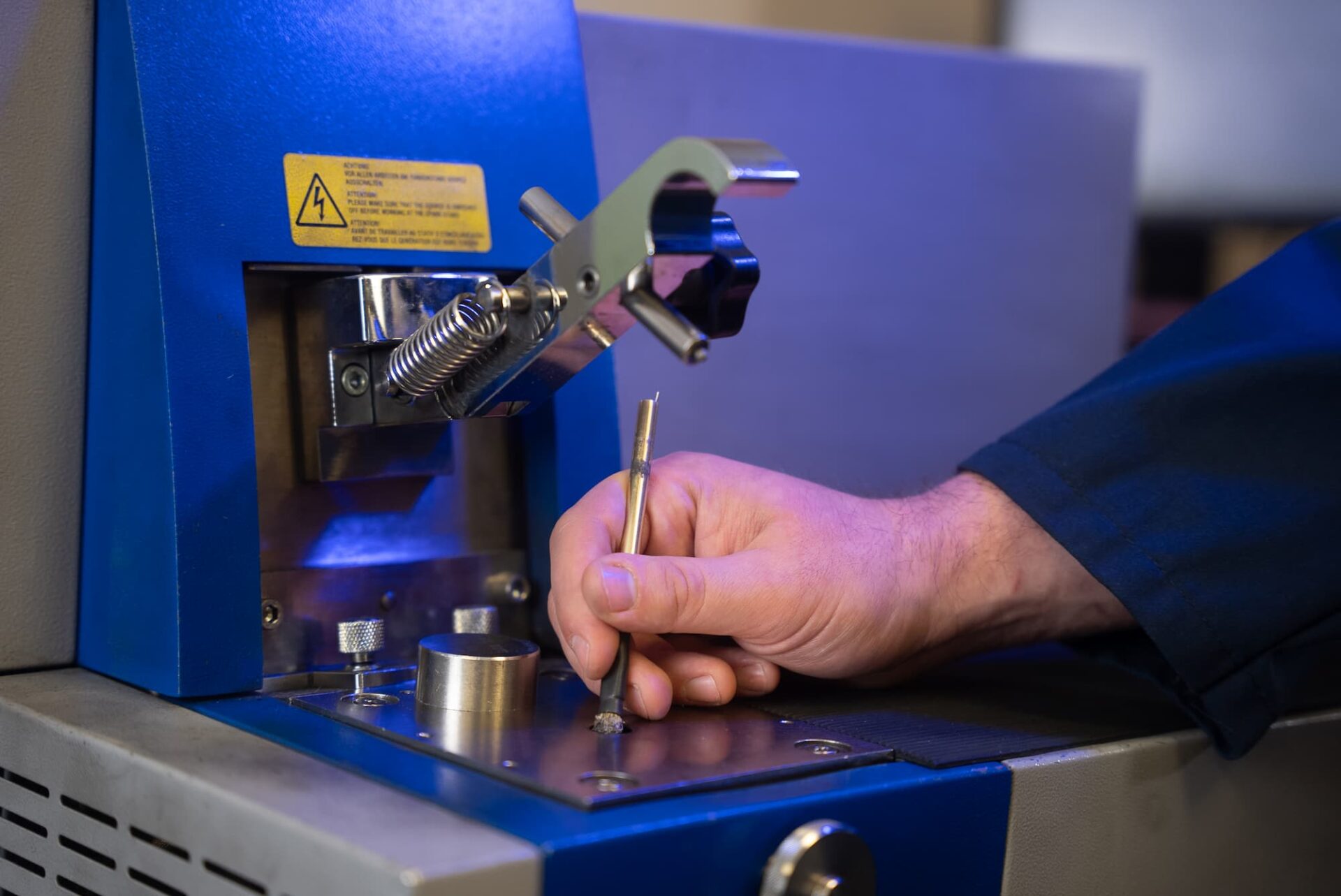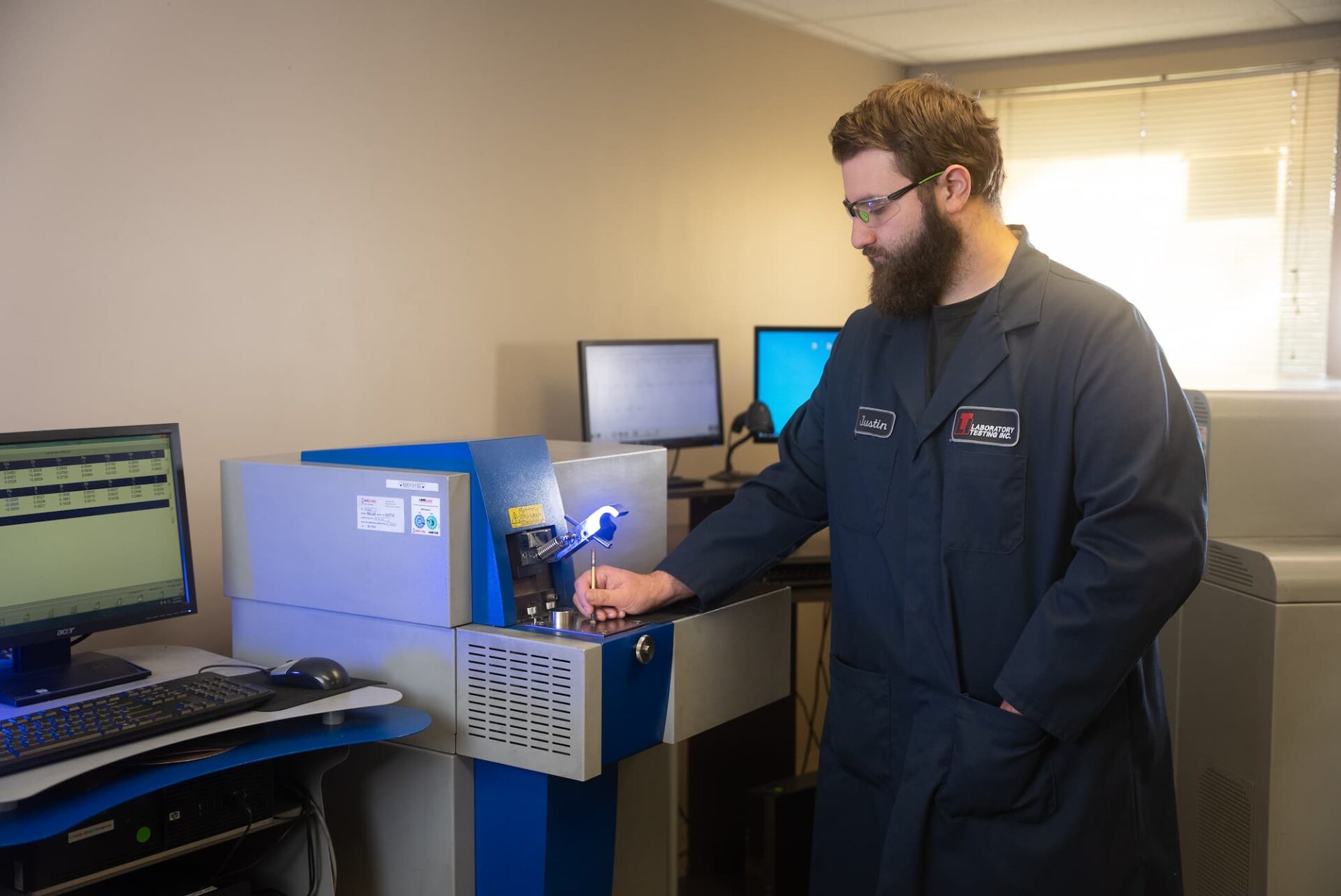

Just like people, materials have unique identifiers. Elements—the building blocks of matter—are discernible through a few core analytical techniques, with atomic emission spectroscopy (or AES testing) being one of the fundamental systems for chemical analysis. While testing apparatuses may apply different physical properties, the end functionality is the same: a quick and accurate method for studying the constituent elements of a material.
Want a deeper dive into how techniques like AES work? Check out our Spectroscopy Explained blog article to explore the science behind the spectrum.
The Mechanism of AES Testing
When free atoms enter an energetic environment, they emit light in a series of wavelength bands, similar to diffusing light into a rainbow. These wavelength bands or emission lines form a pattern characteristic of the atom that produced it. Generally, the intensities of the various characteristic lines are proportional to the number of atoms that produced the lines. If an element is present in a sample, its characteristic spectrum lines also will be detectable. The concentration of that particular element can be determined by measuring the intensities of the characteristic lines and comparing them to the same lines from known concentration standards.
Direct Reading AESThe atoms in the sample energize from a rapid series of high-energy sparks in an argon-filled gap between an electrode (cathode) and the surface of the specimen. When a spark contacts the specimen, the sample rapidly heats and vaporizes, producing a spectrum of lines from each element. These spectra are analyzed using a diffraction grating, mirrors, and a set of photomultiplier tubes to quantify the light emitted from the elements and measure their concentrations. |
Inductively Coupled Plasma (ICP) AESThe Lab’s ICP spectrometers use charge-coupled device (CCD) technology, allowing the instrument to measure the whole spectrum necessary for analyzing all the common metal bases Theoretically, the method is valid for detecting all elements except argon; in practice, good results are obtainable for about 70 elements with detection limits at the parts per billion (ppb) level. |
Capabilities
- Good results for about 70 elements at the ppb level
- Can analyze all common elements in metal and alloys, including soft metals (Sn, Pb, Zn)
- Useful for elements with a low atomic number (B, Al, Mg)
- Equipment can analyze Hf, Ta, and Re in Mar-M-247 alloys
Test Methods/ Specifications:
- ASTM E415
- ASTM E634
- ASTM E1086
- ASTM E1251
- ASTM E3047
- MIL Specifications

AES Testing at Laboratory Testing Inc.
Partner With LTI Today
Laboratory Testing Inc. has the capacity and capabilities to handle all your material testing needs in a single location. Since 1984, we’ve aided customers worldwide with accurate nondestructive testing and precise material lab services. Request a quote or contact us today to see how our industry-leading turnaround times can keep your mission-critical approvals moving forward.